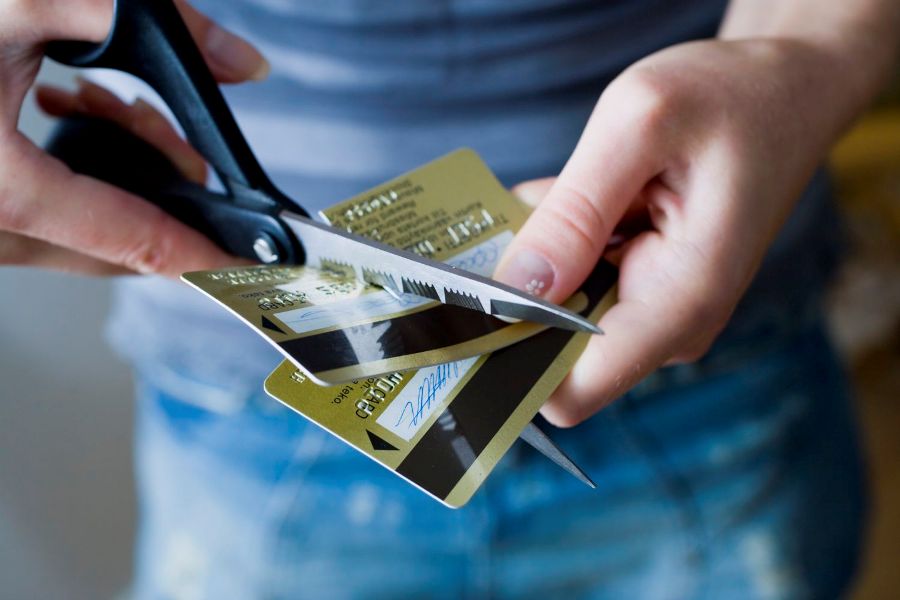Debt can be both beneficial and harmful. It can help you buy a home, pursue higher education, or start a business. However, excessive debt can lead to financial stress and mental health issues like depression and anxiety. This article will help you distinguish between good and bad debt to make informed financial decisions.

Key Takeaways
- Good debt helps improve your financial future by investing in appreciating assets or enhancing your earning potential, such as through education, real estate, or starting a business.
- Bad debt finances depreciating assets or unnecessary luxuries, such as cars, clothes, and other consumer goods, leading to financial strain due to high-interest rates and reduced value over time.
- Some debts fall into a gray area and can be beneficial or detrimental depending on how they are managed, such as consolidating high-interest debt into a lower-interest loan or borrowing to invest with calculated risk.
Good Debt vs. Bad Debt: How to Tell the Difference
Not all debt is harmful. Good debt can serve as a strategic investment, like loans for education or real estate, which tend to increase in value or improve your financial standing over time. Bad debt, however, often involves borrowing for items that quickly lose value or provide no financial return, like luxury goods or high-interest credit cards for everyday expenses.
Debt becomes problematic when it funds unnecessary upgrades or lifestyle choices without any real benefit. Understanding what makes debt beneficial or harmful helps you make smart decisions, avoiding loans that weigh you down and focusing instead on debt that can actually support your financial goals.
What is good debt?
Good debt is borrowing that supports your financial growth. This type of debt involves investments in assets that appreciate or boost your earning potential, helping you build wealth over time. Here are the most common types of good debt:
Education
Investing in education is often considered good debt because it can enhance your career prospects and earning potential. By gaining specialized skills or credentials, you improve your chances of securing higher-paying jobs or advancing in your field.
Before taking on student loans, research your chosen field’s average salaries, job growth, and long-term career potential to ensure the investment will pay off. Degrees that align with stable, high-demand careers typically offer a solid return on investment.
Starting a Business
Many entrepreneurs rely on loans to launch and grow their businesses. While starting a business involves risk, using debt strategically to fund a promising venture can generate long-term income.
Conduct market research to understand your industry and potential customer base, and develop a detailed business plan. Avoid high-interest options, like payday or unsecured loans, as they can lead to financial strain. Choose financing with manageable terms to support growth without excessive costs.
Real Estate
Real estate is often a strong example of good debt, as property generally appreciates over time. Mortgage loans help you build equity, which is the difference between your property’s value and the amount you owe.
Whether buying a primary residence or an investment property, ensure the location and property type support long-term value. Some markets may see slow or unpredictable appreciation, so thoroughly research your area and stay current on your mortgage payments to maximize equity.
What is bad debt?
Bad debt usually involves borrowing for items that quickly lose value or do not contribute to your financial growth. These types of debt often come with high interest rates and can strain your finances. Here are key examples:
Cars
While cars are essential, financing a vehicle can lead to bad debt, especially for luxury or expensive models. Cars depreciate rapidly, losing around 20% of their value within the first year. If possible, save and pay cash for a reliable vehicle, or seek financing with low interest rates if you need a loan.
To get the best terms, work on improving your credit before applying for an auto loan, and consider modestly priced vehicles that retain value over time.
Clothes and Everyday Expenses
Purchasing clothes and household items on credit isn’t advisable, as these items don’t hold value and often carry inflated prices. If using a credit card for convenience, aim to pay the balance in full each month to avoid high-interest debt. Instead, shop sales or discount stores for affordable alternatives.
Borrowing for daily expenses can trap you in a cycle of debt that’s hard to break. Reserve credit for true necessities, and work towards budgeting for these costs.
Luxury and Non-Essential Purchases
Borrowing for luxury items generally creates bad debt because these purchases don’t retain value and can lead to unnecessary interest payments. Rather than relying on credit, plan for luxury buys by saving gradually. Set a budget, a target date, and save monthly toward your goal.
Using debt for these items means paying far more than their purchase price over time, while saving up keeps your finances intact and avoids unnecessary costs.
Gray Area Debts: When Debt Isn’t Clearly Good or Bad
Some types of debt fall into a gray area, where their impact depends on how they’re managed. Here’s a look at common examples, along with a quick risk vs. reward breakdown.
Credit Card Consolidation Loans
If consolidating high-interest credit card debt into a lower-interest loan, this can simplify payments and reduce interest costs. But if new credit card debt is added afterward, it can lead to a larger debt balance.
- Risk: Potential for increased debt if spending isn’t controlled.
- Reward: Simplified payments and lower interest when paired with a strict budget.
Auto Loans
A modest auto loan can be helpful for purchasing a reliable vehicle necessary for work. However, financing an expensive car can quickly become a financial burden.
- Risk: High payments and rapid depreciation with expensive vehicles.
- Reward: Essential transportation within an affordable loan amount.
Home Improvement Loans
Using a loan for renovations that increase home value, like updating kitchens or adding energy-saving features, can be beneficial. Non-essential upgrades, however, may not provide financial returns.
- Risk: Unnecessary debt if the improvements don’t increase value.
- Reward: Increased home value and possible tax benefits with value-adding renovations.
Personal Loans for Major Purchases
A personal loan can help cover necessary expenses, like medical bills, when repaid responsibly. Using one for non-essentials, though, often adds strain without long-term benefit.
- Risk: High interest on non-essential spending.
- Reward: Practical coverage for unavoidable expenses with affordable terms.
Evaluating the risk and reward of gray area debts can help you decide if they align with your financial goals.
How to Turn Bad Debt Into Good Debt
Turning bad debt into good debt is all about smart strategies that reduce interest, streamline payments, and keep you financially secure. Here are some effective ways to manage and restructure existing debt and avoid new bad debt in the future.
Debt Repayment Strategies
- Refinance high-interest debt: Consider refinancing to a lower interest rate if possible, especially on credit card debt or personal loans. Lower rates reduce your monthly interest, allowing you to pay off the principal faster.
- Debt consolidation: If you have multiple high-interest debts, consolidating them into a single loan with a lower rate can simplify payments and reduce interest. Look for fixed-rate loans to avoid fluctuating interest.
- Prioritize high-interest payments first: Focus on paying off high-interest debts as a priority. This approach saves money over time and shortens the payoff period.
Savings Strategies to Avoid Bad Debt
- Build an emergency fund: Set aside funds each month to cover unexpected expenses, like car repairs or medical bills. An emergency fund reduces the need to rely on credit for everyday surprises.
- Set Savings Goals for Large Purchases: For major expenses, save up instead of using credit. Having a set goal, like saving for a new appliance or a vacation, keeps debt under control and prevents high-interest payments.
Final Thoughts
Knowing the difference between good and bad debt is a key step toward financial health, but applying this knowledge makes the real impact. Start by reviewing your current debts and placing them into categories—good, bad, or gray—to see where you stand. With a clear picture of your debt, focus on creating a strategy to pay off high-interest debts first, especially those that don’t add long-term value.
Consider using budgeting tools and resources to make debt management easier. Apps like Monarch or Empower can help track your progress and keep spending on course, while debt calculators offer insight into potential savings from paying off certain debts sooner. Each of these steps brings you closer to a financially secure future, where debt is manageable and serves your long-term goals.
Frequently Asked Questions
How do I know if I can handle taking on new debt?
Assess your current financial situation by reviewing your income, existing debts, and monthly expenses. Calculate your debt-to-income ratio to ensure adding new debt won’t stretch your budget too thin. It’s also important to have a clear plan for how you’ll use the borrowed money and how you’ll repay it without compromising your financial stability.
What are some warning signs that my debt is becoming unmanageable?
Warning signs that debt is becoming unmanageable include missing payments, using one credit card to pay off another, maxing out credit cards, being unable to save money, and experiencing stress or anxiety about finances. If you notice these signs, it might be time to seek financial advice or consider debt counseling.
Are there tax benefits to taking on good debt?
Some types of good debt come with tax advantages. For example, mortgage interest on a primary residence can be tax-deductible in many cases. Similarly, student loan interest may also be deductible. These benefits can reduce the overall cost of borrowing, making good debt even more advantageous for your financial plans.
Should I focus on paying off bad debt before good debt?
It’s generally recommended to prioritize paying off bad debt first, especially if it has high interest rates. Reducing high-interest debt can free up more of your income to manage other obligations. Once bad debts are under control, you can focus on paying down good debt more aggressively, leveraging its benefits to build your financial future.
Can taking on debt help build my credit history?
Yes, responsibly taking on and managing debt can help build your credit history. Regularly using credit and making on-time payments demonstrates your reliability to lenders, which can enhance your credit score over time. However, mismanaging debt can have the opposite effect, so it’s important to borrow wisely.
What are the potential risks of using debt to invest?
Using debt to invest can amplify your returns if the investment performs well, but it also increases your risk if the investment doesn’t pay off. It’s essential to carefully evaluate the potential rewards and risks, ensure you have a solid repayment plan, and only borrow what you can afford to lose without jeopardizing your financial health.




